The famous flexible bookshelf by Ron Arad is a blend of creativity, technology and simplicity; in a way, it can be rightfully considered one of the world’s most radical, daring and revolutionary ideas for a contemporary bookcase design.
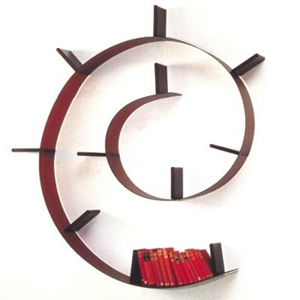
Image source: http://www.giant.co.uk/kart13.html
Designed in 1994 by Ron Arad, the work of the Israeli-born, London-based designer has played a significant role in the way our contemporary furniture is perceived. A careful usage of extrusion technology has allowed the creation of this curvy bookcase, so that it assumes any desired shape, without compromising toughness and functionality. Unlimited shapes can thus be formed, limited only by personal creativity.
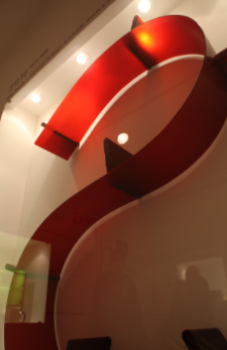
Image source: https://search.creativecommons.org/photos/a353f7fc-bdc0-418b-89cc-47ec461165f7 by br1dotcom
Concept
The basic idea was to bring innovation into the world of bookcases, bringing non-orthogonal shapes into the fold and experimenting with different materials. The bookcase was originally designed as a thin blade of steel, but after the meeting with Kartell , an historic Italian design company specialized in the field of plastics molding, it is now commercially manufactured in PVC, giving it both strength and bendability.
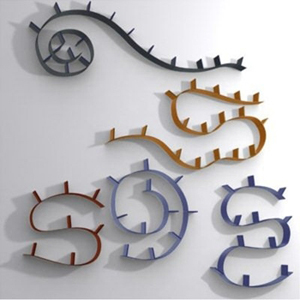
Image source: http://www.giant.co.uk/kart13.html
A key aspect of the design is that it is attached to the wall according to the wishes of the installer, which means that it can be fixed in a spiral, a gentle curve and every other shape in between. This is a significant point, as few designers actively promote the end user having the final say on the aesthetics of their product. As a shelf, its thinness and flexibility give it a precarious appearance but upright dividers at various intervals mean that books can be safely displayed, even at crazy angles.
The name of the project was designed by the same Ron Arad , as the shape of the object resembles a worm has been given the name of Bookworm, which is the union of the words book and worm.
Kartell special PVC
Kartell is an Italian company that makes and sells plastic contemporary furniture. The company, headquartered in Milan, began manufacturing automobile accessories in 1949. It expanded into home furnishings in 1963. It was founded by Giulio Castelli and Anna Castelli Ferrieri.
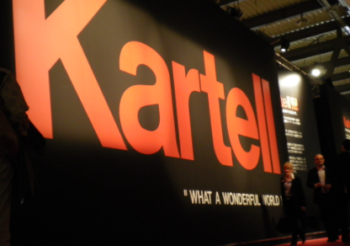
Image source: https://search.creativecommons.org/photos/c422eaef-df16-4fe3-8a5f-e4100f0792c4 by smowblog
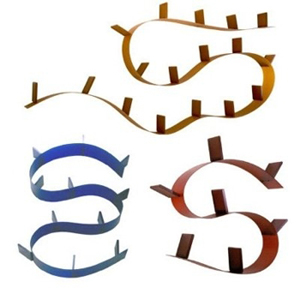
Image source: http://www.giant.co.uk/kart13.html
After the meeting with Kartell, Bookworm was produced using a technopolymer , a plastic material of which the company is leader in producing. To create the technopolymer library in series , the company has created a research team to find the best extrusion technology, remaining faithful to the original product. Thanks to the use of plastic material, the product has been made accessible to a greater user, not losing its charm and its sinuous shape.
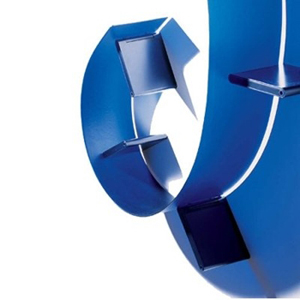
Image source: http://www.giant.co.uk/kart13.html
Available in three different lengths, Bookworm is marked by a series of bookend supports: Bookworm combines flexibility and superior durability allowing for a load of around 10 kg for each support. It can be attached to a wall.
Awards
Thanks to this product, Ron Arad was named “Designer of the Year” and Guest Editor of the International Design Yearbook”. Later in 2015 the company Kartell revisits the bookstore and creates a new product called Popworm.

Image source: https://search.creativecommons.org/photos/59b105a2-c5eb-4eab-86ee-d66355494a05 by British_Pavilion_architects-_Venice_Biennale_2004.jpg: Dave Morris from Edinburgh, UK derivative work: Drorp1 (talk)
Info source:
https://it.wikipedia.org/wiki/Libreria_Bookworm
http://www.spacefurniture.com.au/bookworm-short.html
http://www.kartell.com/gb/bookcase_cod58015981cs.html
http://www.abc.net.au/radionational/programs/archived/bydesign/5290860
